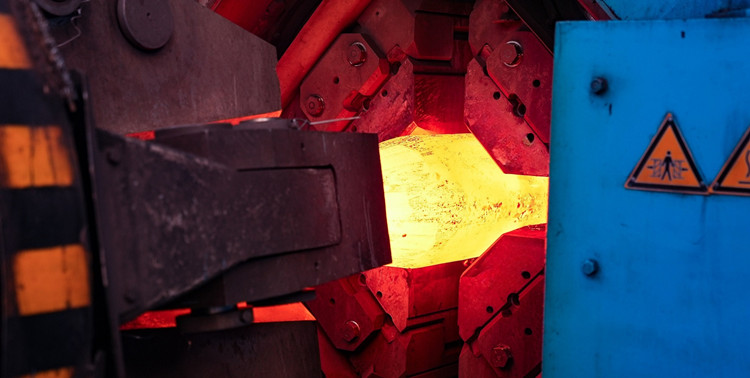- tyler@kirail.com
- +86 15603721115
Post-forging heat treatment of stainless steel forgings is also called primary heat treatment or preparatory heat treatment. It is usually carried out immediately after the forging process is completed. There are several forms such as normalizing, tempering, annealing, spheroidizing, and solid solution. Today we will learn about several of them.

1. Normalizing
The main purpose is to refine the grains. The forgings are heated above the phase transition temperature to form a single austenite structure. After a period of uniform temperature, it is stabilized and then air-cooled out of the furnace. During normalizing, the heating rate should be slow below 700℃ to reduce the temperature difference and transient stress inside and outside the forgings. It is best to add an isothermal step between 650℃ and 700℃; above 700℃, especially above Ac1 (phase transition point), large forgings should increase the heating rate to achieve better grain refinement. The temperature range of normalizing is usually between 760℃ and 950℃, depending on the phase transition point of different component contents. Generally, the lower the carbon and alloy content, the higher the normalizing temperature, and vice versa. Some special steels can reach a temperature range of 1000 ℃ ~ 1150 ℃. However, the structural transformation of stainless steel and non-ferrous metals is achieved through solution treatment.
2. Tempering
The main purpose is to expand hydrogen, and at the same time it can stabilize the structure after phase transformation, eliminate the structural transformation stress, reduce the hardness, and make the stainless steel forgings easy to process and not deform. There are three temperature ranges for tempering, namely high temperature tempering (500 ℃ ~ 660 ℃), medium temperature tempering (350 ℃ ~ 490 ℃), and low temperature tempering (150 ℃ ~ 250 ℃). High temperature tempering method is commonly used in the production of large forgings. Tempering is generally carried out immediately after normalizing. When the normalized forgings are air-cooled to about 220 ℃ ~ 300 ℃, they are reheated in the furnace, evenly heated and kept warm, and then cooled to the surface temperature of the forgings below 250 ℃ ~ 350 ℃ before they can be taken out of the furnace. The cooling rate after tempering should be slow enough to prevent the formation of white spots due to excessive transient stress during the cooling process and to minimize the residual stress in the forging. The cooling process is usually divided into two stages: above 400 ° C, the cooling rate can be slightly faster because the steel is in a temperature zone with good plasticity and low brittleness; below 400 ° C, since the steel has entered a temperature zone with cold work hardening and greater brittleness, a slower cooling rate should be used to avoid cracking and reduce transient stress. For steels that are sensitive to white spots and hydrogen embrittlement, it is necessary to determine the extension of the hydrogen expansion tempering time based on the hydrogen equivalent and the effective cross-sectional size of the forging to allow hydrogen to diffuse and overflow in the steel and reduce it to a safe numerical range.
3. Annealing
The temperature covers the entire range of normalizing and tempering (150 ° C ~950 ° C), and furnace cooling is used. The cooling method is similar to tempering. Annealing with a heating temperature higher than the phase change point (normalizing temperature) is called complete annealing. Annealing without phase change is called incomplete annealing. The main purpose of annealing is to eliminate stress and stabilize the structure, including high temperature annealing after cold deformation, low temperature annealing after welding, etc. Normalizing + tempering is a more advanced method than simple annealing because it involves sufficient phase change and organizational transformation, as well as a constant temperature hydrogen expansion process.